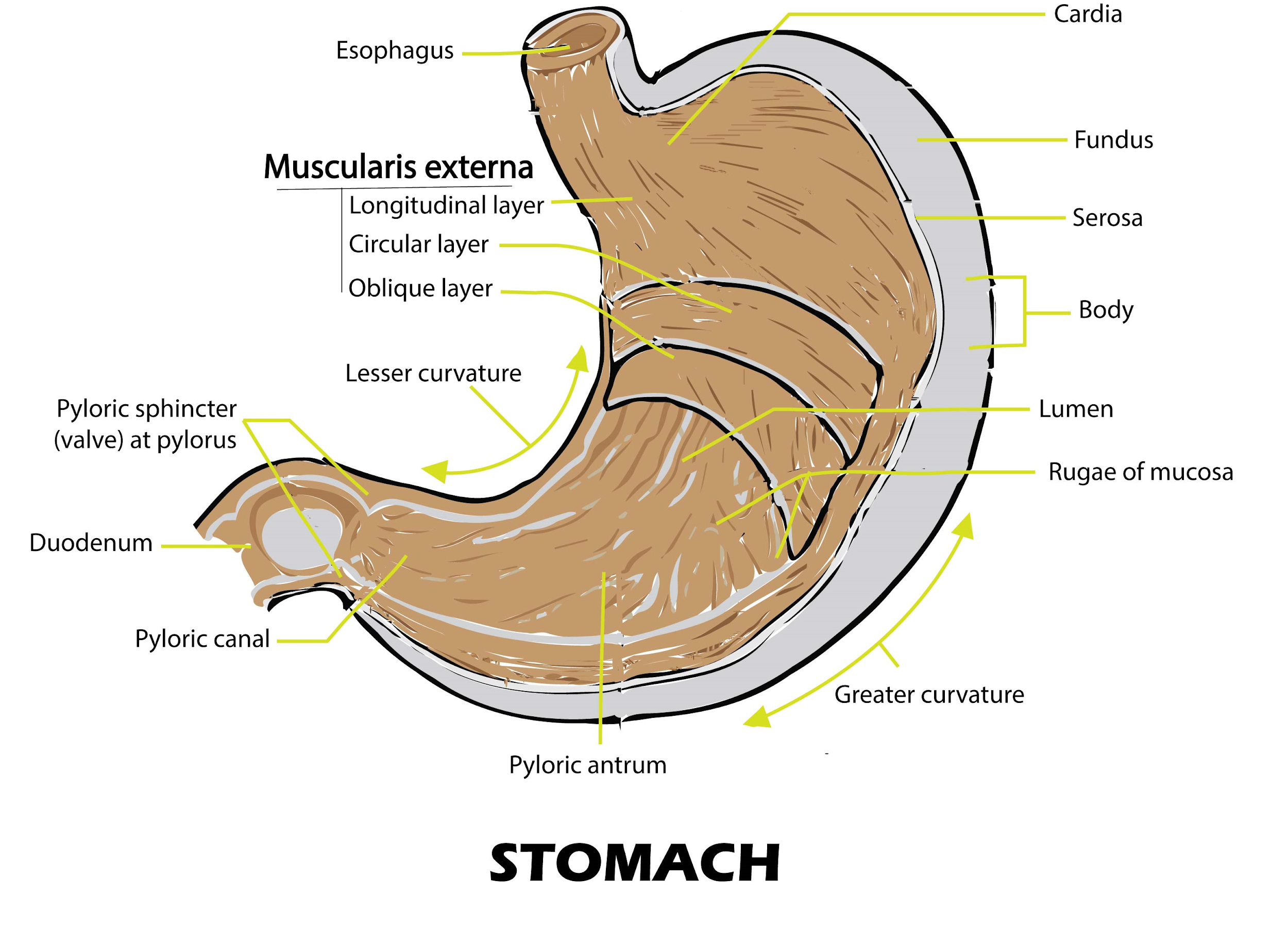
How is the shape of the stomach?(a) As V(b) As J(c) As O(d) None of the
The stomach is a thick, walled organ that lies between the esophagus and the first part of the small intestine (the duodenum). It is on the left side of the abdominal cavity, the fundus of the stomach lying against the diaphragm. Lying beneath the stomach is the pancreas. The greater omentum hangs from the greater curvature.

Gross Anatomy Of Stomach The Anatomy Stories
Given below is a labeled diagram of the stomach to help you understand stomach anatomy. The stomach is divided into four parts. These include: Cardia Fundus Body Pylorus Cardia refers to the section of the stomach that is located around the cardiac orifice. The lower esophageal sphincter lies at the junction where the esophagus meets the stomach.
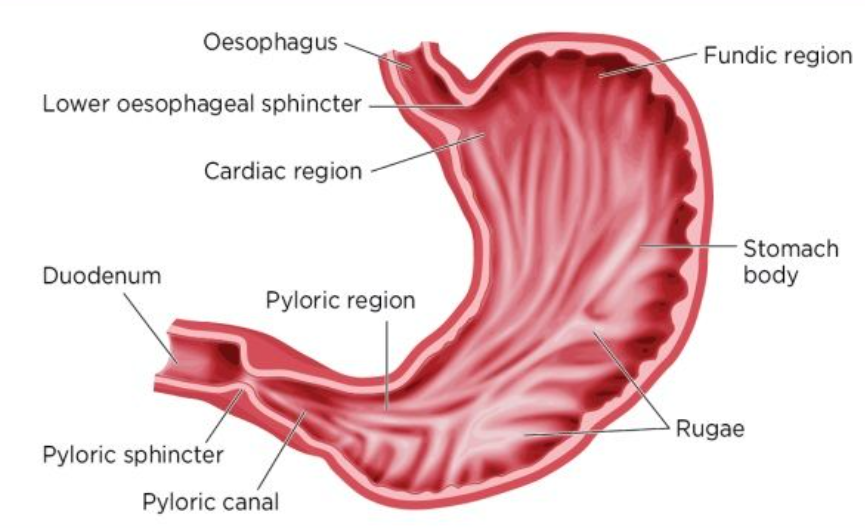
What are the structures and regions of the stomach?
Label the stomach and duodenum using the hints if provided. Group the following structures based on whether they are part of the gastrointestinal tract or just accessory structures. Place the appropriate words and descriptions with the picture with the correct highlighted digestive accessory organ. Label the structures of the abdominopelvic cavity.

Structure and function of stomach anatomy system vector image on
Labeling tape; Procedure. Study a poster and models of the digestive system and identify the mouth, pharynx, esophagus, stomach, small and large intestine. Using post-it notes or labeling tape label these structures on the torso model. Take a picture and insert the picture in the space below. Alternatively you can sketch and label these structures.
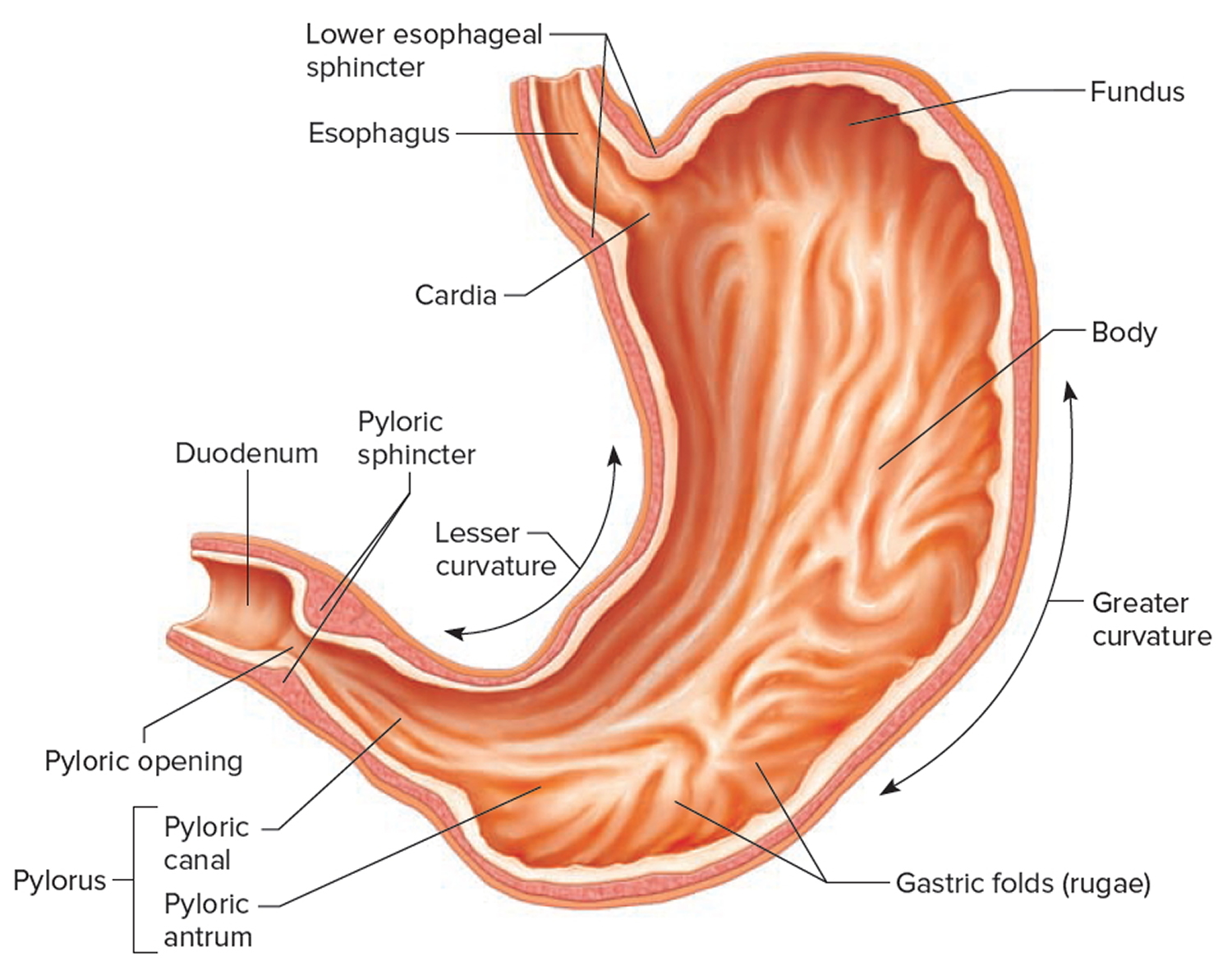
The Stomach Organs Parts, Anatomy, Functions of the Human Stomach
Stomach. A large part of digestion occurs in the stomach, shown in Figure 3. The stomach is a saclike organ that secretes gastric digestive juices. The pH in the stomach is between 1.5 and 2.5. This highly acidic environment is required for the chemical breakdown of food and the extraction of nutrients.

Internal Organs Stomach
Structure There are four main regions in the stomach: the cardia, fundus, body, and pylorus. The cardia (or cardiac region) is the point where the esophagus connects to the stomach and through which food passes into the stomach. Located inferior to the diaphragm, above and to the left of the cardia, is the dome-shaped fundus.

Simple stomach diagram Stomach structure Stomach Anatomy
Structure There are four main regions in the stomach: the cardia, fundus, body, and pylorus ( Figure 23.4.1 ). The cardia (or cardiac region) is the point where the esophagus connects to the stomach and through which food passes into the stomach. Located inferior to the diaphragm, above and to the left of the cardia, is the dome-shaped fundus.

Stomach Diagram Anatomy koibana.info Stomach diagram, Digestive
Start studying LABEL THE STOMACH. Learn vocabulary, terms, and more with flashcards, games, and other study tools.

anatomical structure of stomach Brainly.in
Overview The digestive system is made up of the gastrointestinal tract-mouth, esophagus, stomach, small & large intestine, and rectum. What is the stomach? The stomach is a J-shaped organ that digests food. It produces enzymes (substances that create chemical reactions) and acids (digestive juices).
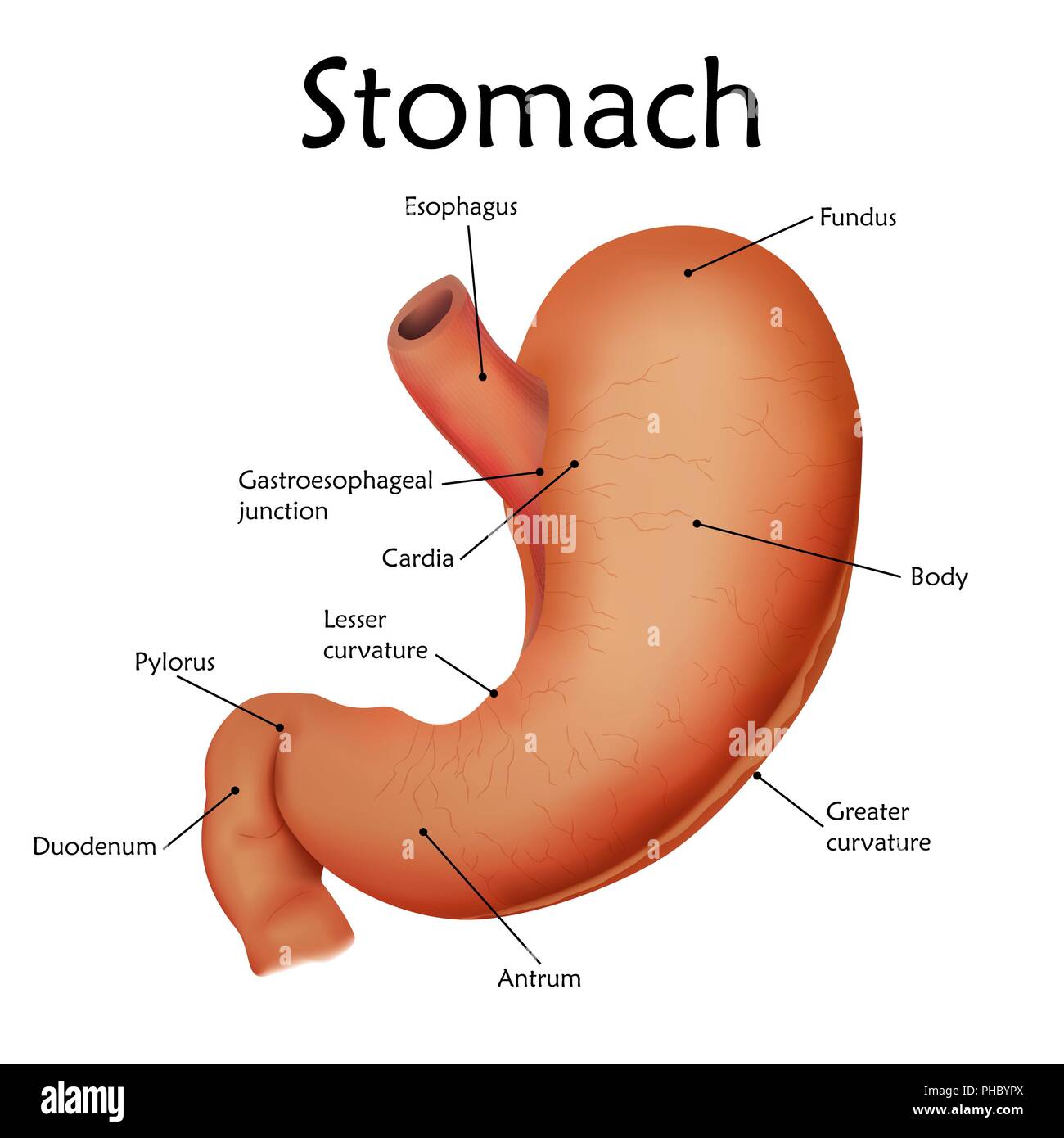
Human stomach with labels, illustration Stock Photo Alamy
Anatomy and Physiology; Anatomy and Physiology questions and answers; Label the structures of the stomach in the figure. Duodenum Pyloric sphincter Longitudinal muscle layer Greater curvature Cardiac part Circular muscle layer Fundus Pylorie sphincter Pyloric part Duodenum
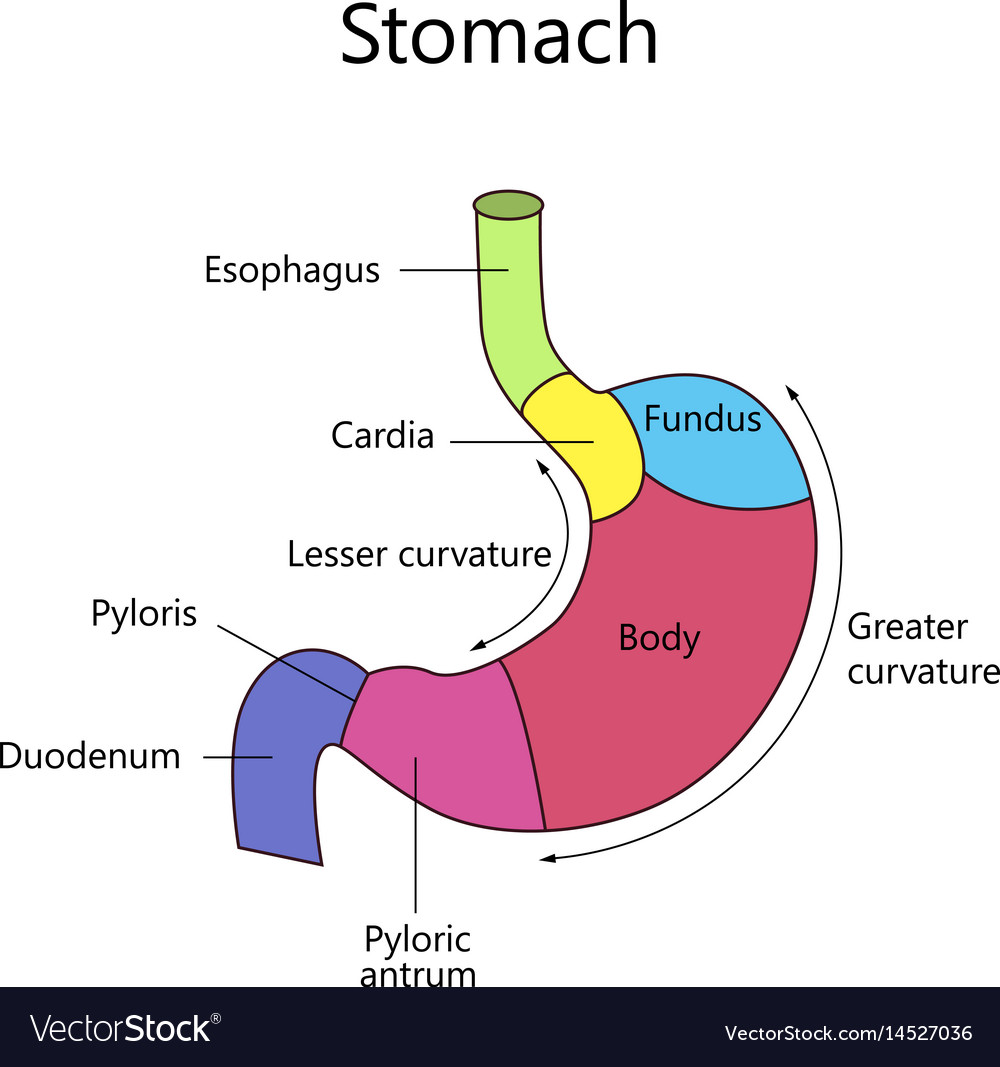
Internal structure human stomach Royalty Free Vector Image
Label on a diagram the four main regions of the stomach, its curvatures, and its sphincter. Structure. There are four main regions in the stomach: the cardia, fundus, body, and pylorus (Figure 21.5.1). It is unique with three layers of the muscularis externa: outer longitudinal layer, middle circular layer, and inner oblique layer.

The Stomach Organs Parts, Anatomy, Functions of the Human Stomach
Structure There are four main regions in the stomach: the cardia, fundus, body, and pylorus (Figure 1). The cardia (or cardiac region) is the point where the esophagus connects to the stomach and through which food passes into the stomach. Located inferior to the diaphragm, above and to the left of the cardia, is the dome-shaped fundus.

Label The Human Stomach
Structure There are four main regions in the stomach: the cardia, fundus, body, and pylorus ( Figure 23.15 ). The cardia (or cardiac region) is the point where the esophagus connects to the stomach and through which food passes into the stomach. Located inferior to the diaphragm, above and to the left of the cardia, is the dome-shaped fundus.

Label The Human Stomach on a diagram the four main regions of stomach
Human Anatomy Lab 20: The Digestive System
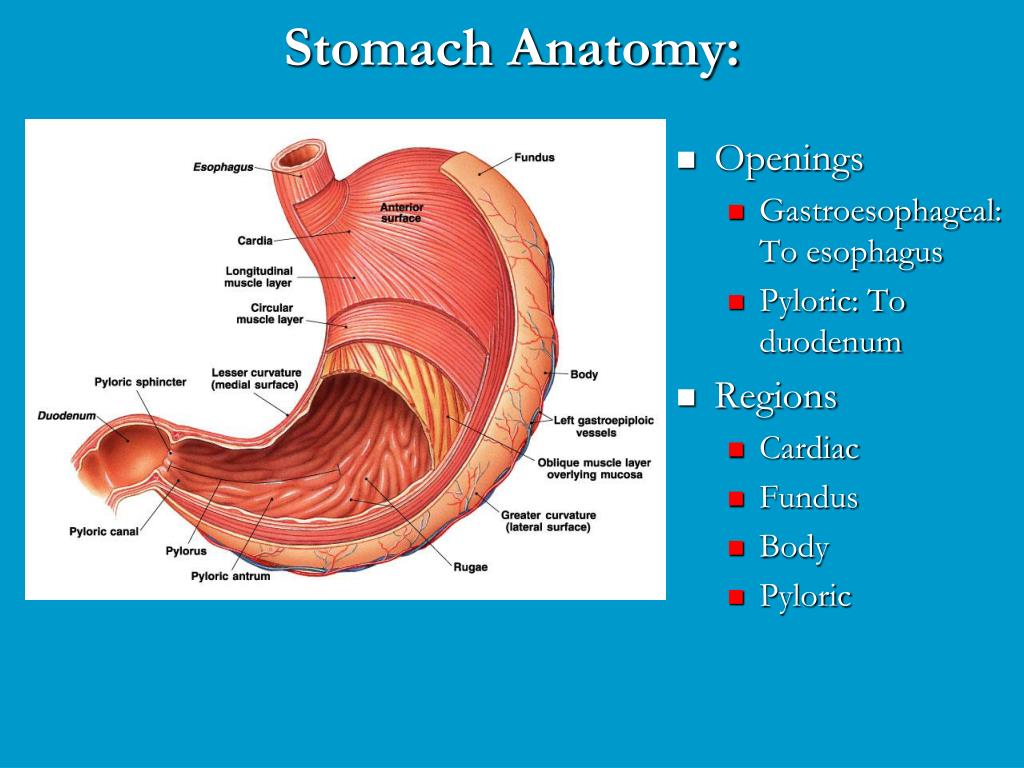
PPT Figure 22 Section 2 PowerPoint Presentation, free download ID
The stomach has four main anatomical divisions; the cardia, fundus, body and pylorus: Cardia - surrounds the superior opening of the stomach at the T11 level. Fundus - the rounded, often gas filled portion superior to and left of the cardia. Body - the large central portion inferior to the fundus. Pylorus - This area connects the.

Ingestion and Digestion The Digestive System MCAT Biology Review
The stomach is an organ of the digestive system, specialized in the accumulation and digestion of food.Its anatomy is quite complex; it consists of four parts, two curvatures and receives its blood supply mainly from the celiac trunk.Innervation is provided via the vagus nerves and the celiac plexus.. Thanks to the stomach, every human is technically capable of corroding metal and picking up.